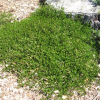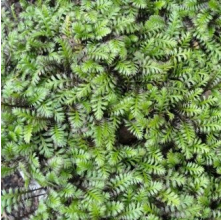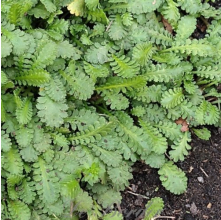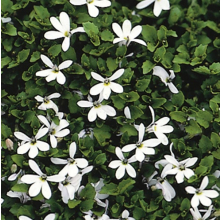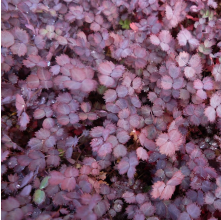Muehlenbeckia axillaris
(Creeping Pohuehue)
Muehlenbeckia axillaris
(Creeping Pohuehue)
Prices:
| Each | 20 or more | |
|---|---|---|
| 1.5L Pot | $9.50 | $9.00 |
Details:
| Type: | Creeper |
| Growth Rate: | Medium |
| Mature Height: | 0.3 m |
| Mature Width: | 1 m |
| Site Condition: | Coastal, Exposed, Frost Tolerant, Heavy Soil, Loamy Soil, Sandy Soil |
| Sun: | Full Sun, Part Shade |
| Drainage: | Dry, Moist |
| Frosts: | Hardy |
| Features: | Drought tolerant. Suitable for bordering or edging and ground cover. Attractive to birds, insects, lizards and bees. Rongoa. Flower colour: Creamy-white. Foliage colour: Bronze. Fruit colour: Dark Brown. Native. Suitable restoration species. |
Muehlenbeckia axillaris, commonly known as Creeping Pohuehue or wire vine, is a low dense ground cover, forming wiry mats up to about 1 m in diameter. It spreads along the ground and even underground. It flowers prolifically in summer with masses of small creamy flowers. The flowers are yellowish white, 4-8 mm in diameter, and borne in groups of up to 3 in the axils. Male and female flowers often occur on the same plant and the female flowers form small opaque white fruit. Provides habitat for native copper butterflies. Birds and geckos love the fruit.
This groundcover has stems and small dark green leaves. Muehlenbeckia axillaris has thin wiry red-brown stems, with small dark green leaves that are less than 1 cm in diameter, and 2–4 mm thick. Prefers full sun. Tolerant of hot, dry conditions. Evergreen. Hardy.
Muehlenbeckia axillaris is primarily grown as an ornamental plant for its unique growth habit and attractive foliage. It is often used in rock gardens, coastal gardens, or other landscapes where its trailing habit can be appreciated. It is also used in erosion control and habitat restoration projects due to its ability to stabilize soil and provide cover for wildlife.
Habitat: Found in subalpine rocky places, riverbeds and and grasslands.
Flowering: Summer [November - April]
Fruiting: Autumn [December - April]
My Lists: Erosion Control
Plant Calendar:
| Jan | Feb | Mar | Apr | May | Jun | Jul | Aug | Sep | Oct | Nov | Dec |
|---|---|---|---|---|---|---|---|---|---|---|---|
| F | F | F | F | F |
| Flowering | Fruiting | Both | |
| Key |
| Fruit | Seed | Nectar | |
| Key | F | S | N |

